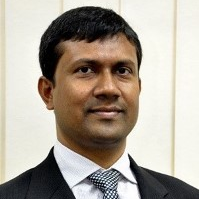Advances in Wireless and Optical Communication Systems
A special issue of Electronics (ISSN 2079-9292). This special issue belongs to the section "Microwave and Wireless Communications".
Deadline for manuscript submissions: 30 April 2024 | Viewed by 2176
Special Issue Editors
Interests: integrated photonics/optoelectronics; fiber optics; optical communications
Special Issues, Collections and Topics in MDPI journals
Interests: optical communications; passive optical networks; photonics; photonic sensors
Special Issues, Collections and Topics in MDPI journals
Interests: optical communications; visible light communication (VLC); radio over fiber (RoF); fiber-wireless (FiWi); free space optics (FSO) for satellite network; horticulture
Interests: IoT and communications; optics; bioelectronics and instrumentations; biosensors; IoT and sensor data analytics; fuel cells; thin-film fabrication; nanomaterials; environmental sensors; electrochemistry
Special Issue Information
Dear Colleagues,
We are inviting submissions to this Special Issue on Advances in Wireless and Optical Communication Systems.
This Special Issue is focused on high-quality manuscripts covering advances in the state-of-the-art of wireless and optical communication systems. Understanding various phenomena in wireless and optical communications, as well as the development of various communication devices, systems, and topologies are some of the key interests of the scientific community. The general scope of this Special Issue includes, but is not limited to, the following: sources and detectors, modulation and coding, propagation and channel characterization, DSP applications to communication systems, resource allocation and interference management, broadband wireless and optical communications, wireless and optical networks, MIMO systems, free-space optical communications, microwave photonics, nonlinear optics, optical-wireless convergence networks, antennas, signal amplification, wireless and optical communication devices, security and authentication, and new applications.
The Special Issue confronts the fundamental principles, cutting-edge research investigations, and recent advances of communication technologies. We encourage the submission of theoretical, simulation, and experimental studies, as well as comprehensive review and survey papers.
Dr. Mohammad Rakib Uddin
Prof. Dr. Md. Shamim Ahsan
Dr. Mohd Rashidi Che Beson
Dr. Ahmed Jalal
Guest Editors
Manuscript Submission Information
Manuscripts should be submitted online at www.mdpi.com by registering and logging in to this website. Once you are registered, click here to go to the submission form. Manuscripts can be submitted until the deadline. All submissions that pass pre-check are peer-reviewed. Accepted papers will be published continuously in the journal (as soon as accepted) and will be listed together on the special issue website. Research articles, review articles as well as short communications are invited. For planned papers, a title and short abstract (about 100 words) can be sent to the Editorial Office for announcement on this website.
Submitted manuscripts should not have been published previously, nor be under consideration for publication elsewhere (except conference proceedings papers). All manuscripts are thoroughly refereed through a single-blind peer-review process. A guide for authors and other relevant information for submission of manuscripts is available on the Instructions for Authors page. Electronics is an international peer-reviewed open access semimonthly journal published by MDPI.
Please visit the Instructions for Authors page before submitting a manuscript. The Article Processing Charge (APC) for publication in this open access journal is 2400 CHF (Swiss Francs). Submitted papers should be well formatted and use good English. Authors may use MDPI's English editing service prior to publication or during author revisions.
Keywords
- antennas and propagation
- 5G and 6G communication devices and techniques
- green communications and computations
- microwave and radio frequency
- MIMO systems and networks
- satellite and space communications
- smart grid communications
- THz communication systems
- optical communications
- optical networks and systems
- free space optical communication
- nonlinear optics
- optical interconnects
- light sources and photodetectors
- specialty fibers
- ad-hoc and sensor networks
- Internet of Things (IoT)
- next-generation networks
- smart grid communications
- information security and cryptography
- cognitive radio networks








